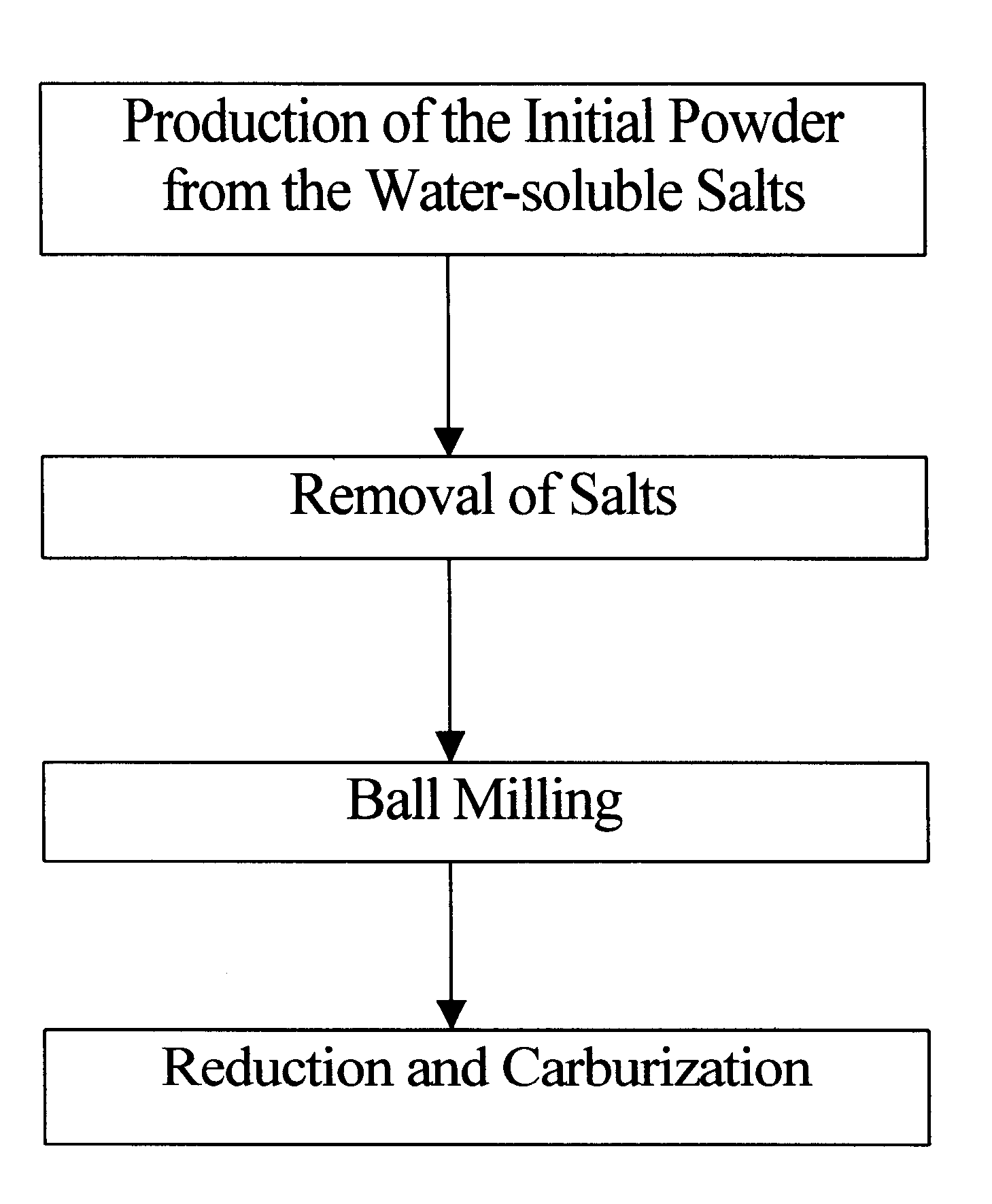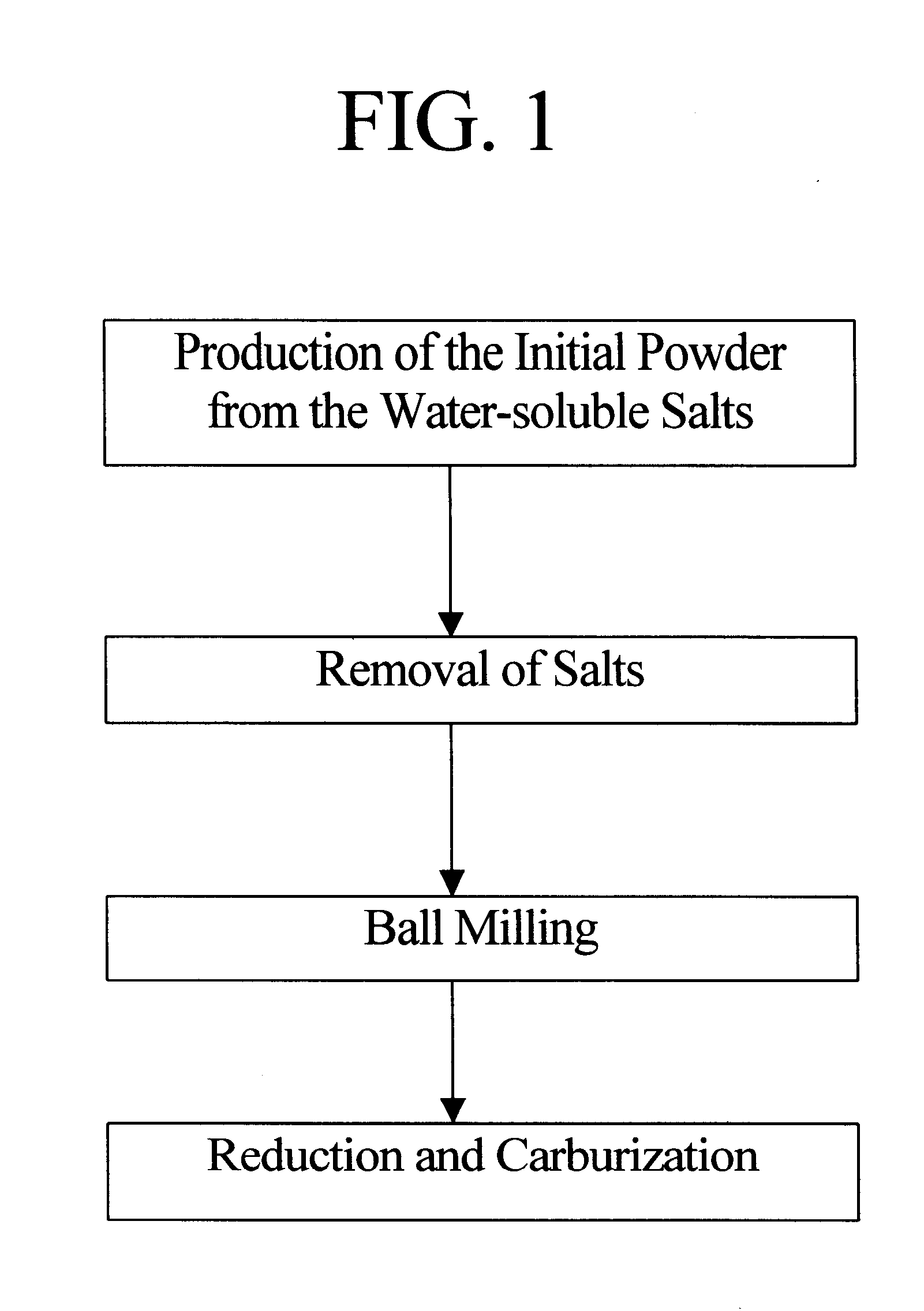Method of producing nanophase WC/TiC/Co composite powder
a composite powder and nano-phase technology, applied in the direction of solid-state diffusion coating, transportation and packaging, coatings, etc., can solve the problems of high cost of such methods, the production process of powders is rather sophisticated, and the defects are still present, so as to increase the surface area of the reaction
- Summary
- Abstract
- Description
- Claims
- Application Information
AI Technical Summary
Benefits of technology
Problems solved by technology
Method used
Image
Examples
Embodiment Construction
The method for producing nanophase WC / TiC / Co composite powder by means of a mechano-chemical method (MCP) of the present invention is described in further detail as follows:
FIG. 1 shows the general sequence of the process. Further description of the process is presented according to this chart.
Process of Producing Initial Powder
In this process, water-soluble salts containing W, Ti, and Co were weighed appropriately for the target composition of WC / TiC / Co, after which they were dissolved in water to yield an aqueous solution. The solution was then spray-dried to produce the initial powder. For the water-soluble salts, ammoniummeta-tungstate (AMT, (NH.sub.4).sub.6 (H.sub.2 W.sub.12 O.sub.40).sub.4 H.sub.2 O)), Ti-trichloride(TiCl.sub.3), and Co-nitrate (Co(NO.sub.3).sub.26 H.sub.2 O) were used.
The conditions of spraying were set as follows: the intake air at the temperature of 240-260.degree. C., exhaust air at 100-130.degree. C., the nozzle rotation speed of 8,000-14,000 rpm, and the...
PUM
| Property | Measurement | Unit |
|---|---|---|
| temperature | aaaaa | aaaaa |
| temperature | aaaaa | aaaaa |
| temperatures | aaaaa | aaaaa |
Abstract
Description
Claims
Application Information
 Login to View More
Login to View More - R&D
- Intellectual Property
- Life Sciences
- Materials
- Tech Scout
- Unparalleled Data Quality
- Higher Quality Content
- 60% Fewer Hallucinations
Browse by: Latest US Patents, China's latest patents, Technical Efficacy Thesaurus, Application Domain, Technology Topic, Popular Technical Reports.
© 2025 PatSnap. All rights reserved.Legal|Privacy policy|Modern Slavery Act Transparency Statement|Sitemap|About US| Contact US: help@patsnap.com


